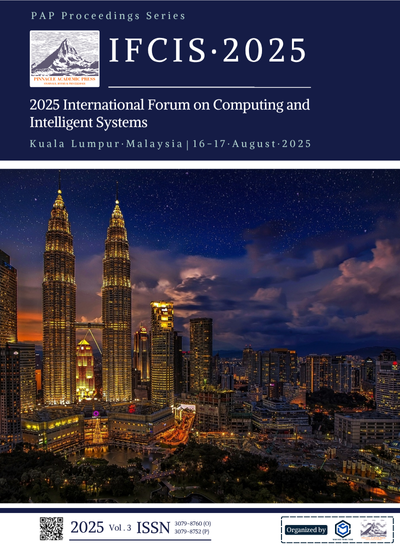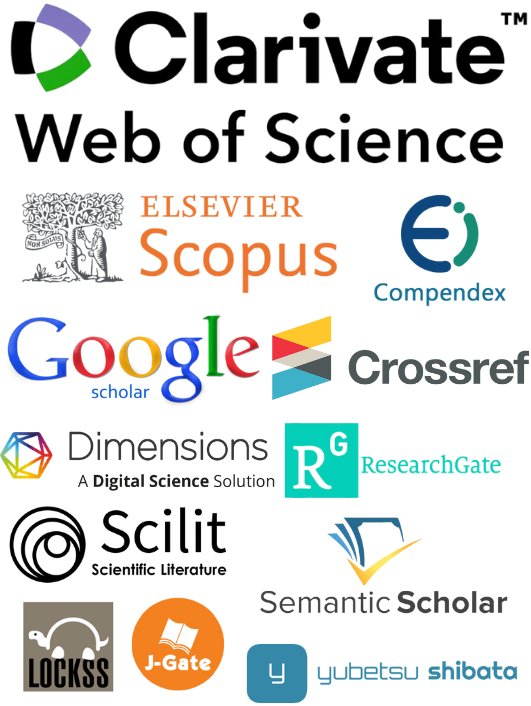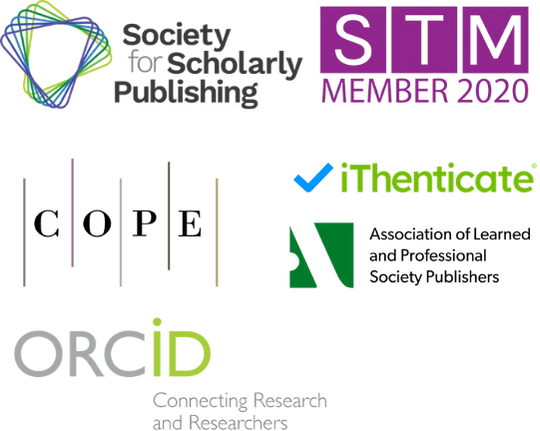A Real-Time Detection Framework for High-Risk Content on Short Video Platforms Based on Heterogeneous Feature Fusion
Keywords:
high-risk content detection, heterogeneous feature fusion, real-time content moderation, multimodal analysisAbstract
This paper presents a novel real-time detection framework for high-risk content on short video platforms based on heterogeneous feature fusion. Social media platforms continuously face challenges in identifying harmful content across multimodal data streams including video, audio, and text. We propose an adaptive fusion architecture that dynamically integrates features from multiple modalities, coupled with efficient processing mechanisms to enable real-time operation. The framework implements a three-stage fusion process with cross-modal attention mechanisms to emphasize discriminative features across modalities. Experimental evaluation using a dataset of 25,000 video samples across five risk categories demonstrates that our approach achieves 95.3% accuracy, 94.8% precision, and 94.2% recall, outperforming state-of-the-art baselines by 4.8% on average. The system maintains an average processing latency of 46ms per content item through adaptive caching and pipeline processing techniques. Ablation studies reveal that cross-modal attention and adaptive fusion components contribute most significantly to performance improvements. Feature importance analysis identifies semantic content from text, speech content from audio, and motion patterns from video as the most discriminative features for high-risk content detection. The framework demonstrates strong generalization capability with 91.7% accuracy on out-of-distribution samples, providing valuable insights for implementing large-scale content moderation systems.
References
1. Z. Ren, Y. Zhou, Y. Chen, R. Zhou, and Y. Gao, "Efficient human pose estimation by maximizing fusion and high-level spatial attention," in Proc. 16th IEEE Int. Conf. Autom. Face Gesture Recognit. (FG), Jodhpur, India, 2021, pp. 1–6, doi: 10.1109/FG52635.2021.9666981.
2. Z. Ji, C. Hu, and G. Wei, "Reinforcement learning for efficient and low-latency video content delivery: Bridging edge computing and adaptive optimization," J. Adv. Comput. Syst., vol. 4, no. 12, pp. 58–67, 2024, doi: 10.69987/JACS.2024.41205.
3. K. Zhang and P. Li, "Federated learning optimizing multi-scenario ad targeting and investment returns in digital advertising," J. Adv. Comput. Syst., vol. 4, no. 8, pp. 36–43, 2024, doi: 10.69987/JACS.2024.40806.
4. E. Feng, H. Lian, and C. Cheng, "CloudTrustLens: An explainable AI framework for transparent service evaluation and selec-tion in multi-provider cloud markets," J. Comput. Innov. Appl., vol. 2, no. 2, pp. 21–32, Jul. 2024, doi: 10.63575/CIA.2024.20203.
5. B. Dong and T. K. Trinh, "Real-time early warning of trading behavior anomalies in financial markets: An AI-driven ap-proach," J. Econ. Theory Bus. Manag., vol. 2, no. 2, pp. 14–23, 2025, doi: 10.70393/6a6574626d.323838.
6. G. Rao, C. Ju, and Z. Feng, "AI-driven identification of critical dependencies in US-China technology supply chains: Implica-tions for economic security policy," J. Adv. Comput. Syst., vol. 4, no. 12, pp. 43–57, 2024, doi: 10.69987/JACS.2024.41204.
7. X. Jiang, W. Liu, and B. Dong, "FedRisk: A federated learning framework for multi-institutional financial risk assessment on cloud platforms," J. Adv. Comput. Syst., vol. 4, no. 11, pp. 56–72, 2024, doi: 10.69987/JACS.2024.41105.
8. J. Fan, H. Lian, and W. Liu, "Privacy-preserving AI analytics in cloud computing: A federated learning approach for cross-organizational data collaboration," Spectrum Res., vol. 4, no. 2, 2024.
9. X. Jia, C. Hu, and G. Jia, "Cross-modal contrastive learning for robust visual representation in dynamic environmental condi-tions," Acad. J. Nat. Sci., vol. 2, no. 2, pp. 23–34, 2025, doi: 10.70393/616a6e73.323833.
10. Y. Xi and Y. Zhang, "Measuring time and quality efficiency in human-AI collaborative legal contract review: A multi-industry comparative analysis," Ann. Appl. Sci., vol. 5, no. 1, 2024.
11. Q. Zhao, Y. Chen, and J. Liang, "Attitudes and usage patterns of educators towards large language models: Implications for professional development and classroom innovation," Acad. Nexus J., vol. 3, no. 2, 2024.
12. J. Zhang, X. Xiao, W. Ren, and Y. Zhang, "Privacy-preserving feature extraction for medical images based on fully homo-morphic encryption," J. Adv. Comput. Syst., vol. 4, no. 2, pp. 15–28, 2024.
13. H. Zhang, E. Feng, and H. Lian, "A privacy-preserving federated learning framework for healthcare big data analytics in mul-ti-cloud environments," Spectrum Res., vol. 4, no. 1, 2024.
14. X. Xiao, H. Chen, Y. Zhang, W. Ren, J. Xu, and J. Zhang, "Anomalous payment behavior detection and risk prediction for SMEs based on LSTM-attention mechanism," Acad. J. Sociol. Manag., vol. 3, no. 2, pp. 43–51, 2025, doi: 10.70393/616a736d.323733.
15. X. Xiao, Y. Zhang, H. Chen, W. Ren, J. Zhang, and J. Xu, "A differential privacy-based mechanism for preventing data leakage in large language model training," Acad. J. Sociol. Manag., vol. 3, no. 2, pp. 33–42, 2025, doi: 10.70393/616a736d.323732.
16. C. Chen, Z. Zhang, and H. Lian, "A low-complexity joint angle estimation algorithm for weather radar echo signals based on modified ESPRIT," J. Ind. Eng. Appl. Sci., vol. 3, no. 2, pp. 33–43, 2025, doi: 10.70393/6a69656173.323832.
17. K. Xu and B. Purkayastha, "Integrating artificial intelligence with KMV models for comprehensive credit risk assessment," Acad. J. Sociol. Manag., vol. 2, no. 6, pp. 19–24, 2024.
18. K. Xu and B. Purkayastha, "Enhancing stock price prediction through Attention-BiLSTM and investor sentiment analysis," Acad. J. Sociol. Manag., vol. 2, no. 6, pp. 14–18, 2024.
19. M. Shu, J. Liang, and C. Zhu, "Automated risk factor extraction from unstructured loan documents: An NLP approach to credit default prediction," Artif. Intell. Mach. Learn. Rev., vol. 5, no. 2, pp. 10–24, 2024.
20. M. Shu, Z. Wang, and J. Liang, "Early warning indicators for financial market anomalies: A multi-signal integration ap-proach," J. Adv. Comput. Syst., vol. 4, no. 9, pp. 68–84, 2024, doi: 10.69987/JACS.2024.40907.
21. Y. Liu, W. Bi, and J. Fan, "Semantic network analysis of financial regulatory documents: Extracting early risk warning sig-nals," Acad. J. Sociol. Manag., vol. 3, no. 2, pp. 22–32, 2025, doi: 10.70393/616a736d.323731.
22. Y. Zhang, J. Fan, and B. Dong, "Deep learning-based analysis of social media sentiment impact on cryptocurrency market microstructure," Acad. J. Sociol. Manag., vol. 3, no. 2, pp. 13–21, 2025, doi: 10.70393/616a736d.323730.
23. Z. Zhou, Y. Xi, S. Xing, and Y. Chen, "Cultural bias mitigation in vision-language models for digital heritage documentation: A comparative analysis of debiasing techniques," Artif. Intell. Mach. Learn. Rev., vol. 5, no. 3, pp. 28–40, 2024, doi: 10.69987/AIMLR.2024.50303.
24. W. Ren, X. Xiao, J. Xu, H. Chen, Y. Zhang, and J. Zhang, "Trojan virus detection and classification based on graph convolu-tional neural network algorithm," J. Ind. Eng. Appl. Sci., vol. 3, no. 2, pp. 1–5, 2025, doi: 10.70393/6a69656173.323735.
25. C. Zhang, "An overview of cough sounds analysis," in Proc. 2017 5th Int. Conf. Frontiers Manufact. Sci. Meas. Technol. (FMSMT), April 2017, pp. 703–709, Atlantis Press, doi: 10.2991/fmsmt-17.2017.138.
26. J. Wang, L. Guo, and K. Qian, "LSTM-Based Heart Rate Dynamics Prediction During Aerobic Exercise for Elderly Adults," Preprints, 2025, doi: 10.20944/preprints202504.1692.v1.
27. D. Ma, M. Shu, and H. Zhang, "Feature Selection Optimization for Employee Retention Prediction: A Machine Learning Ap-proach for Human Resource Management," Appl. Comput. Eng., vol. 141, pp. 120–130, 2025, doi: 10.54254/2755-2721/2025.21789.
28. M. Li, D. Ma, and Y. Zhang, "Improving Database Anomaly Detection Efficiency Through Sample Difficulty Estimation," Pre-prints, 2025. doi: 10.20944/preprints202504.1527.v1.
29. K. Yu, Y. Chen, T. K. Trinh, and W. Bi, "Real-Time Detection of Anomalous Trading Patterns in Financial Markets Using Gen-erative Adversarial Networks," Applied and Computational Engineering, vol. 141, pp. 234–243, 2025, doi: 10.54254/2755-2721/2025.22016.
30. W. Wan, L. Guo, K. Qian, and L. Yan, "Privacy-preserving Industrial IoT Data Analysis Using Federated Learning in Mul-ti-Cloud Environments," Applied and Computational Engineering, vol. 141, pp. 7–16, 2025, doi: 10.54254/2755-2721/2025.21395.
31. Z. Wu, Z. Zhang, Q. Zhao, and L. Yan, "Privacy-Preserving Financial Transaction Pattern Recognition: A Differential Privacy Approach," Preprints, 2025, doi: 10.20944/preprints202504.1583.v1.
32. G. Rao, S. Zheng, and L. Guo, "Dynamic Reinforcement Learning for Suspicious Fund Flow Detection: A Multi-Layer Trans-action Network Approach with Adaptive Strategy Optimization," Applied and Computational Engineering, vol. 119, pp. 1–11, 2025, doi: 10.54254/2755-2721/2025.tj21580.
33. W. Lan, L. Yan, J. Weng, and D. Ma, "Enhanced TransFormer-Based Algorithm for Key-Frame Action Recognition in Basket-ball Shooting," Preprints, 2025, doi: 10.20944/preprints202503.1364.v1.
34. Y. Wang, W. Wan, H. Zhang, C. Chen, and G. Jia, "Pedestrian Trajectory Intention Prediction in Autonomous Driving Scenar-ios Based on Spatio-temporal Attention Mechanism," in Proc. 2024 4th Int. Conf. Electronic Information Engineering and Comput-er Communication (EIECC), Wuhan, China, 2024, pp. 1519-1522, doi: 10.1109/EIECC64539.2024.10929534.
35. S. Michael et al., "Automatic Short Answer Grading in College Mathematics Using In-Context Meta-learning: An Evaluation of the Transferability of Findings," in Artificial Intelligence in Education. Posters and Late Breaking Results, Workshops and Tutorials, Industry and Innovation Tracks, Practitioners, Doctoral Consortium and Blue Sky, A. M. Olney, I. A. Chounta, Z. Liu, O. C. Santos, and I. I. Bittencourt, Eds., vol. 2150, Cham, Switzerland: Springer, 2024, pp. 409–414, doi: 10.1007/978-3-031-64315-6_38.
36. H. McNichols, M. Zhang, and A. Lan, "Algebra Error Classification with Large Language Models," in Artificial Intelligence in Education, N. Wang, G. Rebolledo-Mendez, N. Matsuda, O. C. Santos, and V. Dimitrova, Eds., vol. 13916, Cham, Switzerland: Springer, 2023, pp. 379–391, doi: 10.1007/978-3-031-36272-9_30.
37. M. Zhang, N. Heffernan, and A. Lan, "Modeling and Analyzing Scorer Preferences in Short-Answer Math Questions," arXiv preprint arXiv:2306.00791, 2023.
38. Z. Zhang, Z. Wang, Z. Yang, W. Feng, and A. Lan, "Interpretable math word problem solution generation via step-by-step planning," arXiv preprint arXiv:2306.00784, 2023.
39. M. Zhang, S. Baral, N. Heffernan, and A. Lan, "Automatic short math answer grading via in-context meta-learning," arXiv preprint arXiv:2205.15219, 2022.
40. Z. Wang, M. Zhang, R. G. Baraniuk, and A. S. Lan, "Scientific formula retrieval via tree embeddings," in Proc. 2021 IEEE Int. Conf. Big Data (Big Data), Orlando, FL, USA, 2021, pp. 1493–1503, doi: 10.1109/BigData52589.2021.9671942.
41. M. Zhang, Z. Wang, R. Baraniuk, and A. Lan, "Math operation embeddings for open-ended solution analysis and feedback," arXiv preprint arXiv:2104.12047, 2021.
42. S. Jordan, Y. Chandak, D. Cohen, M. Zhang, and P. Thomas, "Evaluating the Performance of Reinforcement Learning Algo-rithms," in Proc. Int. Conf. Mach. Learn., vol. 119, pp. 4962–4973, Nov. 2020.
43. D. Qi, J. Arfin, M. Zhang, T. Mathew, R. Pless, and B. Juba, "Anomaly Explanation Using Metadata," in Proc. IEEE Winter Conf. Appl. Comput. Vis. (WACV), Lake Tahoe, NV, USA, 2018, pp. 1916–1924, doi: 10.1109/WACV.2018.00212.
44. M. Zhang, T. Mathew, and B. Juba, "An Improved Algorithm for Learning to Perform Exception-Tolerant Abduction," Proc. AAAI Conf. Artif. Intell., vol. 31, no. 1, 2017, doi: 10.1609/aaai.v31i1.10700.
Downloads
Published
Issue
Section
License
Copyright (c) 2025 Ye Lei, Zhonghao Wu (Author)

This work is licensed under a Creative Commons Attribution 4.0 International License.



